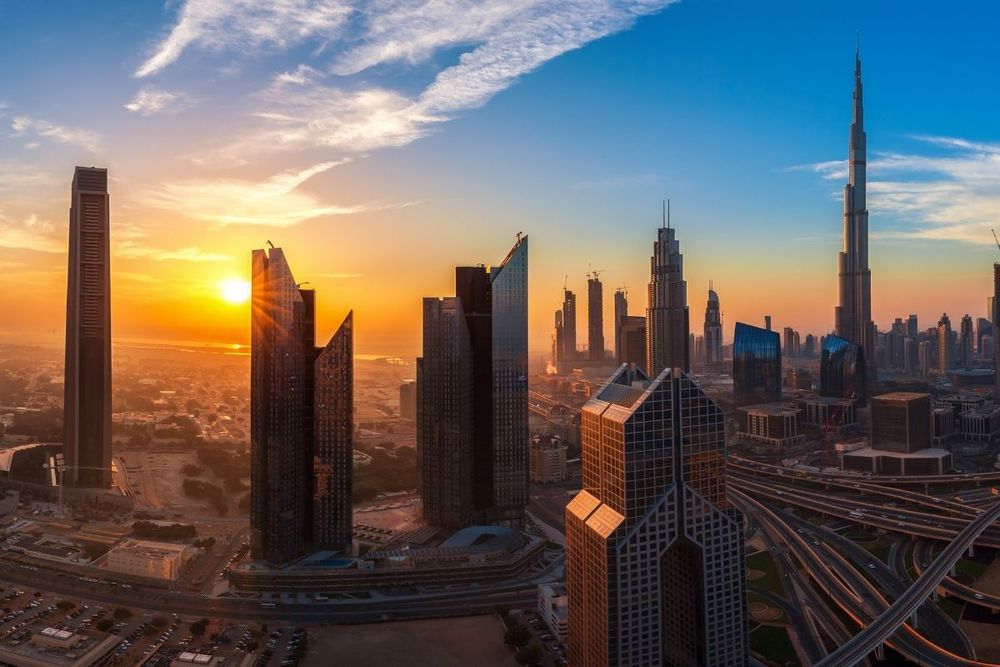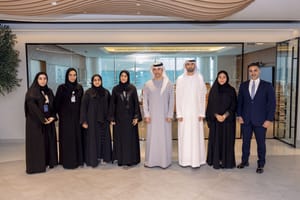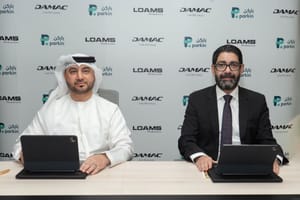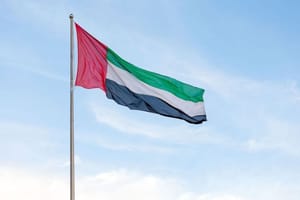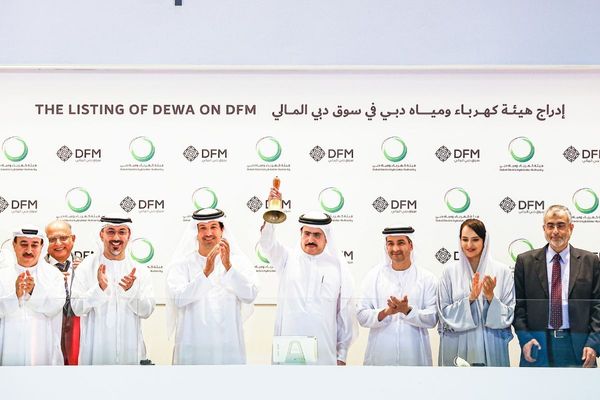The Dubai Culture and Arts Authority (Dubai Culture) today unveiled the results of a unique study on the performance of the emirate’s cultural and creative industries between 2018 and 2020.
The release of the study’s results follows a speech delivered by Her Highness Sheikha Latifa bint Mohammed bin Rashid Al Maktoum, Chairperson of Dubai Culture and Arts Authority (Dubai Culture) and Member of Dubai Council at the World Government Summit during which she revealed statistics on the performance of the cultural and creative sectors in the emirate. Developed in partnership with the Dubai Statistics Center, the study reaffirms Dubai's global competitiveness as a creative economy capital and a hub for creative talent.
The comprehensive sectoral study was done as part of activating the Dubai Framework for Cultural Statistics, an integrated statistical methodology developed by Dubai Culture in collaboration with the Economic Statistics Department team of the Dubai Statistics Center. The Framework outlines statistical descriptions and classification of the domains and activities in the emirate’s creative sector in line with international standards and best practices.
The statistical study evaluates the performance of the creative sector and identifies its strengths and weaknesses. Based on extensive data analysis, it also creates a database for the sector and develops statistical indicators that provide valuable information for formulating strategic plans and targets.
Her Highness Sheikha Latifa said that since being named as the first UNESCO Creative City of Design in the MENA region in 2017, Dubai has launched many ambitious initiatives to advance inter-city cooperation in the sector. Four years after joining the network, Dubai has consolidated its status as a global hub for design and a major centre for the cultural and creative economy, a key goal of the Dubai Creative Economy Strategy launched last year by His Highness Sheikh Mohammed bin Rashid Al Maktoum, Vice President and Prime Minister of the UAE and Ruler of Dubai.
Her Highness further said that according to UNESCO, Dubai is the only city in its Creative City Network in the Middle East and North Africa region that has issued a framework for cultural statistics, an achievement that validates the emirate’s emergence as a major regional and global player in the creative sector. Her Highness said the Dubai Framework for Cultural Statistics also reflects the emirate’s commitment to develop an integrated economic system for cultural industries that supports the creative community, and enables it to create new job opportunities for local talent, attract foreign investment and contribute further to the emirate’s GDP.
Dubai recognised very early that the creative economy plays a key role in promoting GDP growth and worked to build a strong culture of entrepreneurship and innovation in the sector, Her Highness said. Despite global economic challenges, knowledge-based industries including creative industries have been key drivers of economic competitiveness, GDP growth and new job creation, she noted. They have also played an important role in global trade.
According to a report by UNESCO, the International Confederation of Societies of Authors and Composers (CISAC) and EY (formerly Ernst & Young), revenues generated by the global creative economy before the pandemic totaled $2,250 billion, i.e. 3% of world GDP. The sector also created 29.5 million jobs globally, representing 13% of the total worldwide workforce, she said.
Elaborating further on the economic role played by creative industries, Her Highness said the strong performance of the creative sector has a positive impact on other major sectors such as industry, construction, real estate, commerce and tourism. The Dubai Creative Economy Strategy seeks to attract investments that go beyond traditional economic sectors as part of transforming Dubai into a preferred global destination for cultural, creative and artistic talent, Her Highness said.
Hala Badri, Director General of Dubai Culture, said the vibrance of Dubai’s creative and cultural sectors reflects the dynamism of Dubai’s entrepreneurial landscape and its emergence as a focal point for innovation.
"Over the last two decades, Dubai has seen many innovative homegrown entrepreneurial ventures develop into significant players regionally and globally. These include Careem, which has transformed from a local ride-hailing company into a global company that was acquired by global transportation major Uber for AED11 billion; Media.net, a Dubai-based advertising technology start-up, that was acquired for about US$900 million by a group of Chinese investors; and Souq.com, which was acquired by Amazon, apart from many others."
Badri added:
"The new statistical study proves that despite the global repercussions of the pandemic, Dubai has continued to prove its resilience to worldwide economic fluctuations. The study revealed that the cultural and creative industries contributed 4.02% to the emirate's GDP in 2020, the same percentage of contribution achieved in 2019. The resilience of the sector reflects the leadership’s commitment to ensure its sustainability and strength during the pandemic.”
Badri explained that the creative economy includes six main sectors: cultural and natural heritage, books and press, performing arts and celebration, audio-visual and interactive media, visual arts and crafts, and design and creative services. These six sectors are further subdivided into 27 subsectors, including cultural education, music and performing arts, photography, fine arts, crafts, books, film, video games, fashion, product design, among others.
The results of the study validate the success of Dubai’s strategy in supporting the cultural and creative industries and attracting creative talent, skills and entrepreneurs. The period between 2018 and 2020 witnessed a steady growth in the number of enterprises operating in the cultural and creative industries. In 2019, the number of creative enterprises surged 27% to reach 13,144 from 10,351 enterprises in 2018. In 2020, the number of creative enterprises reached 14,771, a growth of 12% from 2019. These creative enterprises, in turn generated exceptional job opportunities. The total workforce within the sector reached 100,486 in 2018, which increased 7.5% in 2019 to reach 108,019. Despite the impact of the pandemic, total employment witnessed an increase of 0.4% in 2020 to reach 108,444. The creative sector’s share of total employment in economic sectors in Dubai increased from 3.4% in 2018 to 3.6% in 2019 and to 4.1% in 2020.
Small and micro enterprises constituted the largest percentage (98%) of the total number of creative enterprises. The number of micro and small enterprises in the creative industries reached 10,112 in 2018, and grew 27% in 2019 to reach 12,884 enterprises. The year 2020 witnessed an increase of 12.5% in the number of micro and small enterprises to reach nearly 14,500.
The significant growth reflects the Dubai Culture and Arts Authority's strategic efforts to support creative entrepreneurs and SMEs and facilitate business growth through a package of incentives that includes long-term cultural visas for talent. The emirate's attractiveness, infrastructure maturity and high quality of life as a smart city also contribute to attracting and retaining creative talent.
The Dubai Creative Economy Strategy, launched by His Highness Sheikh Mohammed bin Rashid Al Maktoum, in addition to a number of other strategic projects, including the Al Quoz Creative Zone, is expected to attract more creative companies and entrepreneurs to the emirate, fast tracking the achievement of its strategic goal to transform Dubai into the global capital of the creative economy by 2026.
In terms of its contribution to the emirate’s overall economy, the creative industries’ share of GDP was 4% in 2019 with value added of AED 17.6 billion, compared 2018 , which saw an value added of almost AED17 billion. According to preliminary estimates for 2020, the creative sector witnessed a growth decline of 11.0% in 2020, which reflected the global slowdown across sectors due to the impact of the pandemic. The decline in the creative sector was mainly due to the drop in demand, especially for recreational goods and services. The design and creative services sector contributed the highest in terms of value to the overall creative economy, accounting for 48.8% of the total value added in 2018, 50.1% in 2019, and 47.6% in 2020. These results qualified Dubai to obtain a membership in the Creative Cities Network in 2017. Dubai was the first city in the MENA region to win the title of Creative City of Design in the global network of 180 cities from 72 countries across the world.
His Excellency Arif Al Muhairi, CEO, Dubai Statistics Center, said the partnership between the Dubai Statistics Center and the Dubai Culture and Arts Authority is part of a framework of government integration created to support government policies and strategies. The two organisations forged a close partnership to support the Dubai Creative Economy Strategy, which is a key driver of the emirate’s new economy based on knowledge and creativity. The study reflects the development of the emirate’s knowledge assets and the creation of an advanced scientific framework to assess the progress of key sectors, in accordance with international methodologies, best practices and standards, he said.
Al Muhairi added that the development of Dubai’s cultural sector and creative economy will contribute significantly to accelerating the emirate's global competitiveness.
With the launch of the Dubai Creative Economy Strategy, Dubai Culture is working with various strategic partners to enhance the growth of the creative and cultural industries, with the support of the private sector. These partners include Dubai’s Department of Economy and Tourism, Dubai Development Authority, Dubai Integrated Economic Zones Authority and Dubai Digital Authority. The efforts of the Authority and its strategic partners is based on several main pillars, including: strengthening the educational system, investing in an enabling environment by strengthening the creative infrastructure, creating platforms for public interaction to activate the sector, strengthening the industry and the economy by establishing a network of creators in the emirate and focusing on the legislative and governance aspect by developing policies that support the creative sectors and working on a general framework for creative intellectual property and to expand markets consuming creative local products.
The Dubai Creative Economy Strategy aims to increase the number of creative and cultural companies and enterprises to 15,000 companies, providing 140,000 jobs in various sectors of the creative economy. It also seeks to raise the economic contribution of the creative economy to 5% of the emirate's GDP by 2026.
News Source: Dubai Media Office
